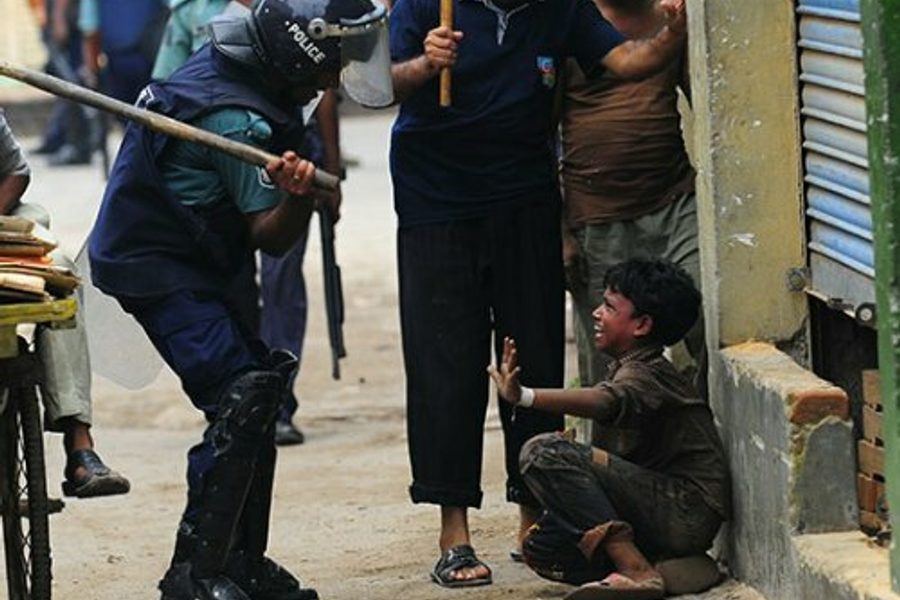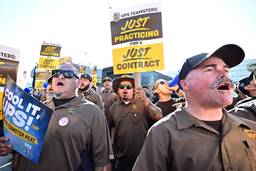
Millions of Americans barely scraped by this holiday season, stuck in poverty-wage jobs or mired in unemployment. But the latest retail sector reports show that we did manage to shop a little more, perhaps because people are resorting to the material comforts of consumption to make up for the misery they’ve suffered as workers. And it’s that appetite for consumer goods that has shaped the holiday wishlist of struggling workers on the other side of the world, who are growing increasingly impatient in their demands for a decent standard of living.
In China, local minimum-wage standards are rising incrementally as factory workers are increasingly eager to get a piece of the modified-capitalist pie. Beijing just announced a 21-percent boost starting in 2011, following a similar pay hike last summer, and several other provinces, like the trade hub Guangdong, have followed this trend in their recent wage reforms (though this doesn’t necessarily mean that the laws will be followed).
Raising the wage floor is partially an effort to stimulate economic growth via consumption. But perhaps more importantly, it reflects the governent’s concerns about escalating labor unrest, along with the private sector’s anxieties about retaining workers and staving off rebellion.
The spontaneous strikes that rippled through China’s auto industry over the past year alarmed both officials and employers, and resulted in modest gains for workers at multinational companies like Toyota and Honda, which openly capitalize on the country’s absurdly low labor costs.
Employers, not surprisingly, claim that pushing up wages would impose an undue burden on their bottom line. And there are legitimate fears that rising labor costs, combined with arbitrary tax policies, could drive factories to simply move to cheaper regions, according to the Hong Kong-based China Labour Bulletin. That’s not to let employers off the hook, though. The main obstacle to achieving wage equity, CLB argues, is the lack of a truly democratic collective-bargaining system, which neither employers nor party officials have much interest in establishing:
So far however, the government has only used administrative means, raising the minimum wage, and coercion/persuasion when intervening in strikes and protests. What it has so far failed to do is to encourage employers and to empower employees to engage in collective bargaining that could establish decent and affordable wage levels and working conditions and practices that are acceptable to both management and labour.
In an analysis of the impact of the wildcat auto strikes – a dramatic surge of activism in the booming southern industrial heartland – Boy Lüthje wonders whether workers, with the backing of the local media and even some state-run trade unions, now have enough clout to sustain pressure on their bosses:
Often, local governments back up violations of labor law by major investors, as has been documented in many cases for suppliers to multinationals such as Wal-Mart, Apple, and Nike.
But under conditions of rapid growth and highly modern production, the methods of control have become ineffective. Hundreds of labor conflicts occurred in the wake of the global economic crisis, affecting millions of Chinese workers in 2008 and 2009. Following the recovery, workers are seeking a voice….
It is the activism of young migrant workers with almost no experience in workplace organizing that is providing lessons to the unions — not only in China, but throughout the industrialized world.
That’s a tall order for the world’s most paradoxical proletariat. The rabble of China’s migrant workers, many of whom are children of peasant farmers with little education and sometimes not even a stable address, might seem an unlikely model for grassroots labor organizing.
Yet recent violence in Bangladesh over wages highlights how labor tensions in the Global South are trending toward a mass movement. Earlier this month, thousands of workers demonstrated and blocked traffic at two factories outside Dhaka, outraged at the delayed implementation of a new minimum wage (which fell far short of union demands to begin with). In the aftermath of a bloody clash with police, the political volatility surrounding wage pressures appears to be reaching a breaking point across the region, and business interests are wising up to newly emboldened workers’ willingness to hold both employers and government officials accountable.
And what about here in the U.S.? Seven states will kick off 2011 by raising their minimum wages by about nine to twelve cents per hour, primarily to keep pace with the rising cost of living. The National Employment Law Project notes that “Strengthening the buying power of low-wage workers is especially critical in the current economic climate… because the majority of new jobs created in the wake of the recession are in low- and mid-wage industries.”
Still, current minimum wage rates, whether it’s the federal baseline of $7.25 an hour (roughly $15,000 annually, if you can survive till the end of the year on that) or slightly higher state mandates, are often far too low to lift a typical family out of poverty, and not even close to a living wage in many cities. Not to mention the people who gone months or years without a job and face little hope of earning even the bare minimum in the coming year.
So those toys and gadgets that we wishfully spent our savings on may have made the holidays a little more bearable. But remember that that they’re symbols of other aspirations, too: the fruits of a parallel labor force toiling away at Santa’s workshop in Shenzhen. This season, from Detroit to Dhaka, working people are connected not just through global trade routes, but through an unrelenting struggle to earn a dignified living.

I hope you found this article important. Before you leave, I want to ask you to consider supporting our work with a donation. In These Times needs readers like you to help sustain our mission. We don’t depend on—or want—corporate advertising or deep-pocketed billionaires to fund our journalism. We’re supported by you, the reader, so we can focus on covering the issues that matter most to the progressive movement without fear or compromise.
Our work isn’t hidden behind a paywall because of people like you who support our journalism. We want to keep it that way. If you value the work we do and the movements we cover, please consider donating to In These Times.
Michelle Chen is a contributing writer at In These Times and The Nation, a contributing editor at Dissent and a co-producer of the “Belabored” podcast. She studies history at the CUNY Graduate Center. She tweets at @meeshellchen.







